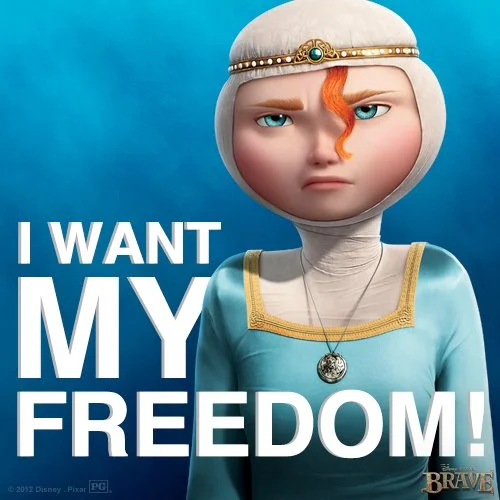Right now we are immersed in a Grand Trine in the element of water, a rare astrological event linking Jupiter in Cancer, Saturn in Scorpio and Neptune in Pisces in harmonious aspects with each other. The watery ways of the previous and next few days can set tones or feelings reverberating for Jupiter’s entire transit through Cancer, which ends July 16, 2014.
To best understand the element of water, I first go to the often-overlooked distinction between spirit and soul. Within this distinction, the spirit tends to fly high and look forward and ahead, aiming up and out, looking to transcend the world below, rise above it all, and escape the events of the past. The soul tends toward descent, moving downward into the depths to what’s buried underneath or left behind, reflecting on history and loss, welcoming shadow and darkness as rich and necessary terrain for soul-making. The spirit is, naturally, spiritual; the soul is more psychological (“psyche” means “soul”). The spirit seeks clarity and vision, while the soul lingers in the mysteries and unanswered questions of life and death. The spirit is excited, optimistic and jubilant, while the soul tends to be more depressed, moody and downtrodden. This bi-polar combination of spirit and soul in each of us allows us to, in the words of Mother Abbess, climb every mountain and ford every stream until we find our dreams.
The four elements—fire, earth, air and water—work nicely within this distinction. From the archetypal perspective, fire and air have spiritual connotations, while earth and water connect more naturally with the soul. The Grand Trine in water, then, moves us into the mysterious ways of the soul, its emotions and feelings and sensitivities and longings and desperations, and the kinds of experiences that “make” soul, if we’re willing to dive in and get wet.
Water is connected with memory and reflection, and like the soul it operates indirectly. We see this indirection in the creatures depicting the three water signs of the zodiac. The crab of Cancer walks sideways on the beach, thanks to the bend of its legs. The scorpion of Scorpio stings from behind, thanks to the bend of its tail. And the two fish of Pisces, with eyes on the sides of their heads, don’t exactly look at the world in a straight-forward manner. They see from the sides. Additionally, the two fish are usually imagined swimming away from each other, rather than toward each other in the direct, head-on approach of, say, fiery Aries. The soul expresses itself indirectly through symbols, through metaphors and stories, music and poetry, and through artwork. Water is about imagery and imagination. When you stand in front of Vincent Van Gogh’s “Starry Night,” the painting says so much. It evokes enormous feeling, yet does so indirectly. We see “Starry Night” and pause to reflect on where it takes us. Imagination opens up. To “reflect” means to “bend back.” The reflective soul looks backward, behind the mere what-you-see-is-what-you-get arena of life.
The element of water also shows itself in our lives when we lack obvious and clear direction, when our vision of the future is foggy and blurry, leaving us feeling bogged down with uncertainty or confusion, or feeling stuck. The Grand Trine in Water isn’t a time of productivity as much as it is a time of experiencing life on an emotional level, or imagining the year ahead, or reflecting on matters important to your soul. While not productive in the usual sense, water does lend itself to improbable solutions, as seen in The Wizard of Oz, when Dorothy grabs a bucket from the sidelines and splashes water all over the Wicked Witch of the West, melting her away. An indirect solution to a very real problem, coming in sideways.
ROLLING BACK THE RIVERS IN TIME
There is a saying, that Time is a river that flows in two directions: the future and the past. While we tend to think of memory and reflection in terms of the past, science now knows that the place in the brain that remembers the past is the same place in the brain the imagines the future. This is more in tune with how ancient Greek culture viewed memory. To the Greeks, memory was a goddess named Mnemosyne, and Mnemosyne was the mother of the Muses, the protectors of the arts, history, music and dance. The musing involved with writing poetry or history is the same musing through which Van Gogh painted “Starry Night” and the same musing with which we remember our lives, with any imagination. Jungian analyst Lyn Cowan writes beautifully about Mnemosyne in her book Tracking the White Rabbit:
“Mnemosyne is like a theater, upon whose stage the Muses perform what we recall of our lives. They take a person’s or a people’s history and shape it, re-shape it, animate it, sculpt it, draw it out, set it to music, give it color, set it free through verse, release it into the air of spoken words so that it may fly ahead to become images of the future.”
The meaning of “muse” includes “to wonder” and “to dream.” Another meaning is “to waste time.” This is a large part of the nature of the Grand Trine in water. It’s a time to muse, even if it feels like you are wasting time. It’s a time to imagine, reflect, remember, wonder about the past and wander into the future, feel deeply, feel deeper, feel confused, feel all over the place, splash about, muck about, drink it in and draw it out. It’s about being in present time, knowing that “present time” has nothing to do with Time. Most spiritual practices today attempt to leave the past behind, simply let it go. As if. That's what the spirit desires, but that rarely, if ever, actually works. Why? Because it abandons the soul. From the soul’s perspective, if you listen today to your favorite song from 1984, it does not take you out of today or the present moment at all—it connects you with the realm of Mnemosyne, the eternal and timeless terrain of memory and imagination. The memory and the connection and the feelings of listening to that song add depth and meaning, substance and strength, continuity and richness to the present moment and to the whole of life. History is far more than just a series of events that happened "back then." Its Muse is named Clio, and she tends the fertile grounds of history from which the present and the future grow.
















